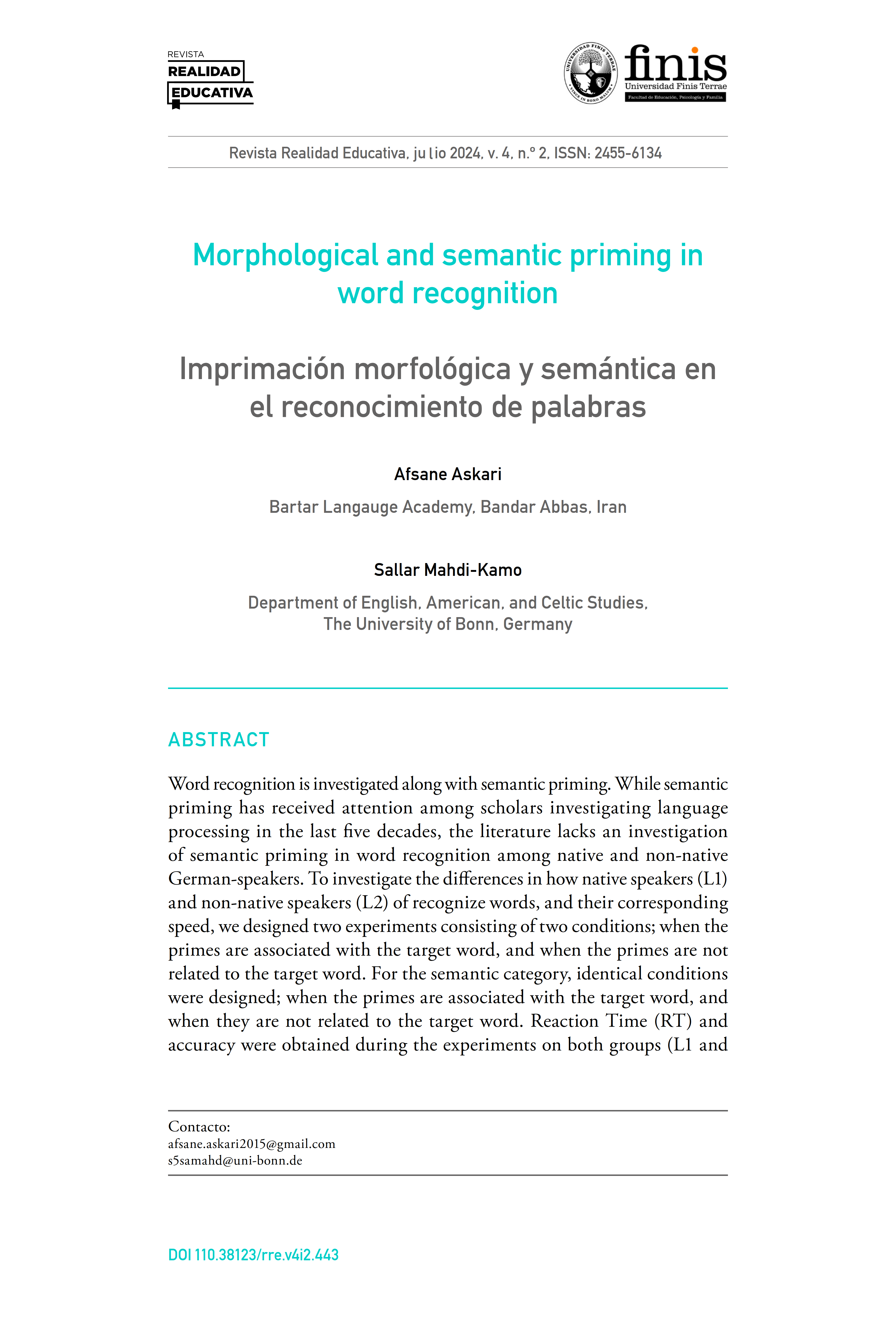Morphological and semantic priming in word recognition
DOI:
https://doi.org/10.38123/rre.v4i2.443Keywords:
word recognition, priming, German language, native speakers, non-native speakersAbstract
Word recognition is investigated along with semantic priming. While semantic priming has received attention among scholars investigating language processing in the last five decades, the literature lacks an investigation of semantic priming in word recognition among native and non-native German-speakers. To investigate the differences in how native speakers (L1) and non-native speakers (L2) of recognize words, and their corresponding speed, we designed two experiments consisting of two conditions; when the primes are associated with the target word, and when the primes are not related to the target word. For the semantic category, identical conditions were designed; when the primes are associated with the target word, and when they are not related to the target word. Reaction Time (RT) and accuracy were obtained during the experiments on both groups (L1 and L2). The experiment was controlled by the DMDX software package. The results indicate that there are no such differences among native speakers(L1) and non-native speakers of the German language unless in individual choices. There are similarities among first language speakers (L1) and second language speakers (L2) in both categoriesــــmorphology and semantics. The delay would occur when non-native speakers see a word in morphological and semantic priming.
Downloads

Published
How to Cite
Issue
Section
License
Copyright (c) 2024 Afsane Askari, Sallar Mahdi-Kamo

This work is licensed under a Creative Commons Attribution-NonCommercial-NoDerivatives 4.0 International License.
Los contenidos de esta revista se distribuyen bajo una licencia Atribución/Reconocimiento-NoComercial-SinDerivados 4.0 Internacional.












